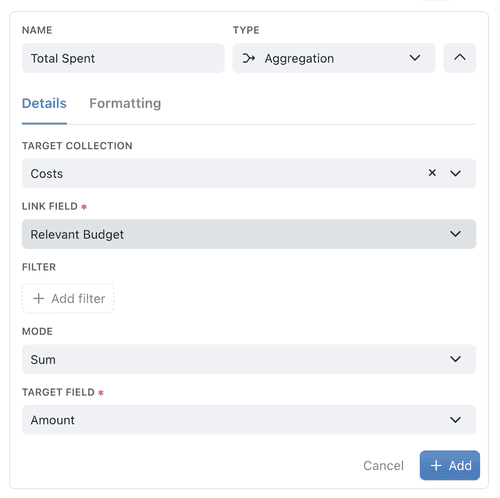Aggregation Fields
Compute values by summarising data from a linked collection.
Aggregation fields
When setting up an Aggregation Field, you need to define:
The collection from which to pull data.
The field that establishes a connection between the two collections.
(For modes other than Count) The numerical field in the target collection to use in calculations.
The type of calculation to perform, such as:
Total number of related records.
Total sum of a numerical field.
Mean value of a numerical field.
The smallest or largest value, respectively.

Tips for Using Aggregation Fields
- You can refine your aggregation by adding filters Filter, ensuring that only records meeting specific criteria (e.g., only 'Completed' invoices) are included.A set of conditions applied to a Collection or View to narrow down which Records are displayed.
By mastering Aggregation Fields, you can automate calculations, averages & totals from your connected data. This keeps your Kinbabase dynamic and streamlined.
If you have questions or need further assistance, our support team is here to help.